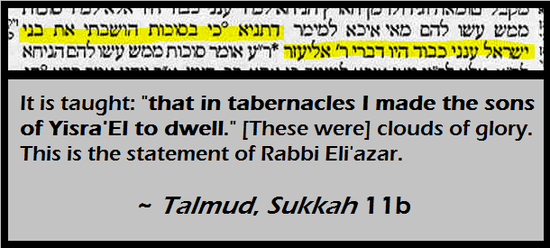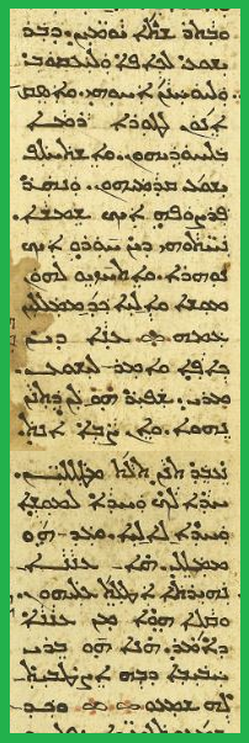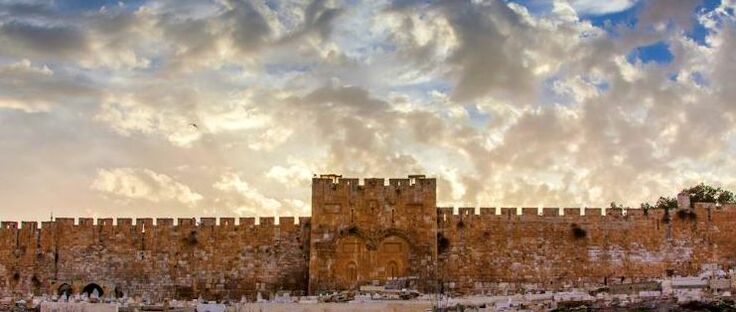THE CLOUDY TABERNACLE
by Jeremy Chance Springfield
4/10/19
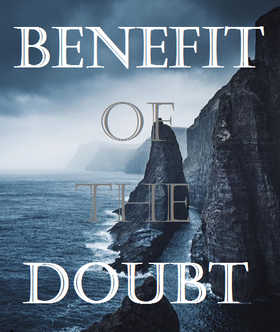
Reading Scripture is an unparalleled event for a believer. Those lines are living Text, inspired by the Spirit to all who would heed them as divinely authoritative. The faithful pour over the passages with sincerity, seeking to unravel the worth inherent in every word. The declarations are meditated upon as the wellspring of all truth, and any doubt towards the holy themes held therein is viewed as antithetical to a pure belief in the One who commanded such words to be recorded.
For this reason, it is easy to overlook certain statements that we come upon while studying Scripture. Sometimes a passage is encountered that, if carefully considered, will make the reader pause with a critical question – not of faith, but rather, of how the piece fits into the whole. Cursory readings might lead to missing the nuance, but attention paid to such places allows for a potentially important event to occur in a believer’s religious life. This provides the contemplative access down a road of questioning and rumination, attempting to understand the depth of interwoven truth that is the tapestry of the holy Text.
Such doubt of the devoted is not the rotten variety, but the kind that leads the believer into a further certainty once the answers are arrived at. If properly handled, it can be beneficial to a person's faith. It is the question that does not eat away, but edifies, leaving a stronger structure of faith than there was before. For this reason, it is to be embraced and investigated for all the value that might be unearthed in pursuing the elusive answer.
One fine example of such questioning whose answer serves to establish true belief rather than erode it surrounds the curious historical matter concerning how the people of the Holy One lived during the forty years of wandering through the Arabian desert before entering at last into the land promised to our father Abraham. Specifically, it involves a detail focusing on the yearly festival called in Hebrew Sukkot, and in English, “Tabernacles,” or in some translations, “Booths.”
The passage of our interest is found in the Torah’s book of Leviticus 23:42:44. In this passage we read the command given to Moses by the Holy One concerning the Biblical fall festival.
For this reason, it is easy to overlook certain statements that we come upon while studying Scripture. Sometimes a passage is encountered that, if carefully considered, will make the reader pause with a critical question – not of faith, but rather, of how the piece fits into the whole. Cursory readings might lead to missing the nuance, but attention paid to such places allows for a potentially important event to occur in a believer’s religious life. This provides the contemplative access down a road of questioning and rumination, attempting to understand the depth of interwoven truth that is the tapestry of the holy Text.
Such doubt of the devoted is not the rotten variety, but the kind that leads the believer into a further certainty once the answers are arrived at. If properly handled, it can be beneficial to a person's faith. It is the question that does not eat away, but edifies, leaving a stronger structure of faith than there was before. For this reason, it is to be embraced and investigated for all the value that might be unearthed in pursuing the elusive answer.
One fine example of such questioning whose answer serves to establish true belief rather than erode it surrounds the curious historical matter concerning how the people of the Holy One lived during the forty years of wandering through the Arabian desert before entering at last into the land promised to our father Abraham. Specifically, it involves a detail focusing on the yearly festival called in Hebrew Sukkot, and in English, “Tabernacles,” or in some translations, “Booths.”
The passage of our interest is found in the Torah’s book of Leviticus 23:42:44. In this passage we read the command given to Moses by the Holy One concerning the Biblical fall festival.
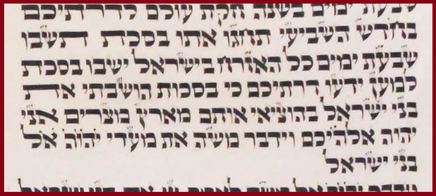
42 “In tabernacles you must dwell seven days; all native in Yisra’El shall dwell in tabernacles,
43 so that your generations shall know that in tabernacles I made the sons of Yisra’El to dwell in bringing them out from the land of Mitzrayim. I am YHWH your Deity.”
44 And Mosheh spoke of the festivals of YHWH unto the sons of Yisra’El.
43 so that your generations shall know that in tabernacles I made the sons of Yisra’El to dwell in bringing them out from the land of Mitzrayim. I am YHWH your Deity.”
44 And Mosheh spoke of the festivals of YHWH unto the sons of Yisra’El.
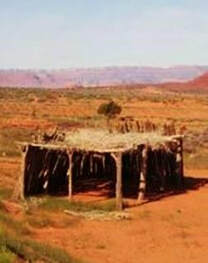
We see that Moses relayed the divine commandment to us to dwell in a “tabernacle” (Hebrew: SUKKAH) for this festival. This is accomplished by building a temporary structure, typically using wood to construct it. In fact, the root term for SUKKAH actually implies the partial shade of an aboreal area. This legitimacy is hinted at also in Leviticus 23:40 and Nehemiah 8:15, which speaks of the use of branches in rejoicing during the festival and also in constructing SUKKOT. Therefore, the end result of fulfilling the command to dwell in a SUKKAH / “tabernacle” is to inhabit a crudely-erected temporary wooden habitation.
The truly interesting factor in this commandment is found in the second half of the above passage from Leviticus 23:42-43. There we see that the reason for living in a SUKKAH for seven days is to know that the Holy One caused Israel to dwell in such structures when the people were brought out from Egypt. It is this simple passage that serves as an example of the seemingly problematic doubt that can arise from certain statements in Scripture.
How?
The truly interesting factor in this commandment is found in the second half of the above passage from Leviticus 23:42-43. There we see that the reason for living in a SUKKAH for seven days is to know that the Holy One caused Israel to dwell in such structures when the people were brought out from Egypt. It is this simple passage that serves as an example of the seemingly problematic doubt that can arise from certain statements in Scripture.
How?
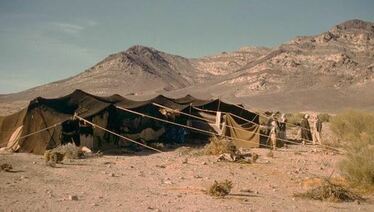
The answer is that nowhere in the Text of the Torah or elsewhere in the Word do we read that any of the people dwelt in tabernacles at any time during the forty years of wilderness wandering. Not once does Moses make clear to the people to do so. There are zero examples from the Text to validate the statement made by the Holy One to Moses. So, what’s going on? Did Moses forget to add that detail to the Torah? Why is no mention made of such a thing if it is supposed to be a fact stated by authority of the Creator? Not only is the evidence for such a statement missing entirely, we encounter instead overwhelming evidence to the contrary. In 170 different times in the Torah the reader comes across the mention of the people dwelling in “tents,” or “encamping” (using a derivation of the Hebrew word for “tent”).
What does the faithful do with this apparent contradiction? Do we just take the Word of the Holy One as truth and move on in the Text, disregarding the issue? Or do we face it and attempt to see if a harmony can be gleaned from such a thing? The answer, of course, is to search and prove out all things as best we can. Doing so will indeed provide not only a closure to an apparent problem, but also a path that leads us to a further beautiful truth, so that the richness of the reliability of the Text grows our faith instead of gnawing away at it.
Therefore, moving forward, how do we find an answer to this issue?
Well, if we pay attention to the root meaning of the word SUKKAH, knowing that it is something that provides a covering of partial shade like the foliage of a tree, then a subtle detail of the Torah can be seized upon to help us better understand the enigmatic statement of the Holy One.
What does the faithful do with this apparent contradiction? Do we just take the Word of the Holy One as truth and move on in the Text, disregarding the issue? Or do we face it and attempt to see if a harmony can be gleaned from such a thing? The answer, of course, is to search and prove out all things as best we can. Doing so will indeed provide not only a closure to an apparent problem, but also a path that leads us to a further beautiful truth, so that the richness of the reliability of the Text grows our faith instead of gnawing away at it.
Therefore, moving forward, how do we find an answer to this issue?
Well, if we pay attention to the root meaning of the word SUKKAH, knowing that it is something that provides a covering of partial shade like the foliage of a tree, then a subtle detail of the Torah can be seized upon to help us better understand the enigmatic statement of the Holy One.
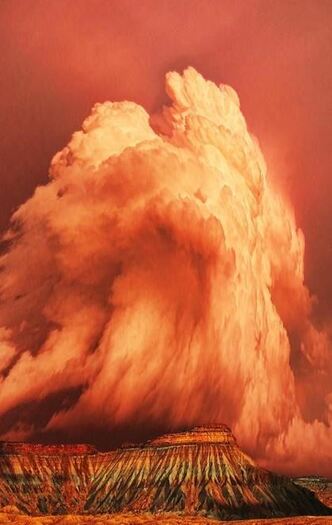
In ten different places throughout the Torah, we read about a unique cloud that covered the twelve tribes as they moved through the wilderness on their trek to the Promised Land (see Ex. 13:21-22; 14:19-20, 14:20, 24; 19:9, 16; 24:15-16; 40:34). This supernaturally-ordained cloud signified not only the Presence of the Creator journeying faithfully with them, but also served as the SUKKOT “tabernacles” that covered everyone during those wilderness years!
Such an idea, while at first potentially strange to consider, is validated further by remembering how the Text of Leviticus 23:43 explains the notion that the people dwelt in SUKKOT “tabernacles” in the wilderness – the divine statement does not tell us that the people obeyed any specific commandment to dwell in SUKKOT “tabernacles.” Rather, the Text tells us “in tabernacles I made the sons of Yisra’El to dwell.” This detail spoken to Moses by the Holy One is a key to understanding properly the information provided for us in the Torah about this matter. There need be no damaging doubt arising from the fact that we never read of the people obeying any commandment to dwell in constructed SUKKOT “tabernacles” simply because they were never given such a commandment either by the decree of the Almighty or of Moses! Instead, the statement made is seen to be valid solely based on the fact that the Holy One Himself caused the people to dwell in SUKKOT “tabernacles” by virtue of the supernaturally-sustained cloud that shaded the entire population of Israel in the wilderness! It was His doing – His act of kindness for the people so that they would know He cared, so that they would listen to this Deity who had their best interest in mind!
Amazingly, this concept of the clouds serving as the SUKKOT mentioned in Leviticus 23:43 is also something promoted by the ancient rabbis, as we find such information recorded for us in the Talmud Bavli, tractate Sukkah 11b.
Such an idea, while at first potentially strange to consider, is validated further by remembering how the Text of Leviticus 23:43 explains the notion that the people dwelt in SUKKOT “tabernacles” in the wilderness – the divine statement does not tell us that the people obeyed any specific commandment to dwell in SUKKOT “tabernacles.” Rather, the Text tells us “in tabernacles I made the sons of Yisra’El to dwell.” This detail spoken to Moses by the Holy One is a key to understanding properly the information provided for us in the Torah about this matter. There need be no damaging doubt arising from the fact that we never read of the people obeying any commandment to dwell in constructed SUKKOT “tabernacles” simply because they were never given such a commandment either by the decree of the Almighty or of Moses! Instead, the statement made is seen to be valid solely based on the fact that the Holy One Himself caused the people to dwell in SUKKOT “tabernacles” by virtue of the supernaturally-sustained cloud that shaded the entire population of Israel in the wilderness! It was His doing – His act of kindness for the people so that they would know He cared, so that they would listen to this Deity who had their best interest in mind!
Amazingly, this concept of the clouds serving as the SUKKOT mentioned in Leviticus 23:43 is also something promoted by the ancient rabbis, as we find such information recorded for us in the Talmud Bavli, tractate Sukkah 11b.
This idea is not just a fanciful interpretation, either. It is actually derived from other places in Hebrew Scripture. Specifically, Psalm 18:11 gives the clearest link of a divinely-ordained cloud to a supernatural SUKKAH.

He made darkness His hiding place; around Him His tabernacle was dark waters; the thick gloom of clouds.
He made darkness His hiding place; around Him His tabernacle was dark waters; the thick gloom of clouds.
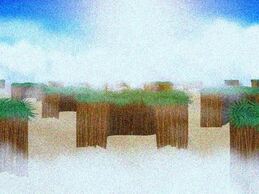
King David penned this inspired thought of the connection between a SUKKAH and a thick cloud and the unique Presence of the Holy One of Israel. He was somehow aware of the astonishing link even during this early part of Israel’s history. How did he know to view a cloud related to the Divine to the concept of the SUKKAH? There is nothing in the imagery of a crudely-constructed tabernacle that hints at a divinely-ordained cloud, is there? How could the shepherd-made-king know this link? Perhaps he first encountered it while studying the Torah and noting the idea also mentioned by the ancient sentiment recorded in Job 36:29, where we read the words of Elihu, the only friend of Job who was not guilty of misrepresenting the Holy One in his advice given to the pitiable man. Elihu’s sentiment there is quite similar to David’s own lyric.

Also, can one understand the expansion of the thick gloom – the clamor of His tabernacle?
Elihu, a man who was, to the best of our knowledge, a Gentile believer in the Creator of heaven and earth, had a unique understanding of the nature of the Presence of the Holy One even though he was outside of the covenant of Abraham and the covenant given to Israel at Sinai.
All of this brings us to the understanding that the Holy One Himself indeed caused the people of Israel to dwell under SUKKOT “tabernacles” during the time of their coming out of Egypt. It was not their own doing, but the grace of the Most High who provided them a constant shelter of shade in an otherwise burning desert. He Himself gave them the blessing of a divinely-ordained cloudy SUKKAH!
Three humans are also recorded as telling us of the connection: Moses, Elihu, and King David. These three men are of interest in the topic because they actually are links to a final account that serves to wrap up the topic in an astounding manner.
We have to move to the Messianic account of Yeshua and the event of the “transfiguration,” as it is popularly called. Although recorded in the three Synoptic Gospels (Matthew 17; Mark 9; Luke 9), since the accounts are generally identical, let the focus be on that recorded in the Aramaic of the Peshitta's text of Matthew 17:1-5.
All of this brings us to the understanding that the Holy One Himself indeed caused the people of Israel to dwell under SUKKOT “tabernacles” during the time of their coming out of Egypt. It was not their own doing, but the grace of the Most High who provided them a constant shelter of shade in an otherwise burning desert. He Himself gave them the blessing of a divinely-ordained cloudy SUKKAH!
Three humans are also recorded as telling us of the connection: Moses, Elihu, and King David. These three men are of interest in the topic because they actually are links to a final account that serves to wrap up the topic in an astounding manner.
We have to move to the Messianic account of Yeshua and the event of the “transfiguration,” as it is popularly called. Although recorded in the three Synoptic Gospels (Matthew 17; Mark 9; Luke 9), since the accounts are generally identical, let the focus be on that recorded in the Aramaic of the Peshitta's text of Matthew 17:1-5.
|
1 And after six days, Yeshua guided Kifa, and Yaqub, and Yukhanan his brother, and they went up to a high mountain by themselves.
2 And Yeshua was transformed before them, and His face was illuminated as the sun, yet His outer garments, they were whitened as the luminance! 3 And they saw with them Mushe and Eliya where they were speaking with Him! 4 Yet, Kifa replied, and said to Yeshua, “My master, it is beautiful for us that we should be here! And if you desire, we shall make here three tabernacles: one for you, and one for Mushe, and one for Eliya!” 5 And while he spoke, see! an illuminated cloud tabernacled over them, and a voice was from the cloud, that said, “This is My Son, the beloved, whom I have chosen! You must listen to Him!” |
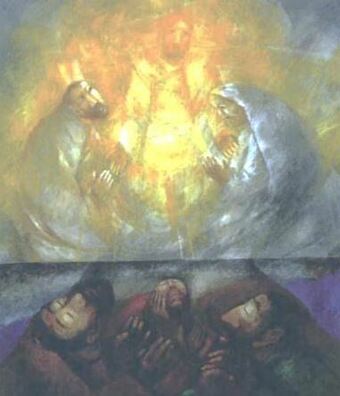
This event displays the authority Yeshua has been granted in this world by the heavenly decree of the Holy One. The three disciples of Peter, James, and John also see the miraculous appearance of Moses and Elijah along with a glorified Yeshua. The typical explanation is that the unique appearance of the two important prophets speaks to the validity of Yeshua’s ordination as the promised Messiah. While that could certainly hold true, I think there is a deeper expression in their appearance in the context in which they are seen.
Based on the context of the topic at hand, we see that Moses was integral in telling the people that the Holy One’s special cloud served for them as a supernaturally-ordained SUKKAH / “tabernacle” during the wilderness journey. Thus, the presence of Moses here with a special cloud makes complete sense in the account. It should also be remembered that Moses had multiple direct contacts with the Holy One and the “cloud,” most prominently upon the mountain of Sinai itself (see Exodus 19:16, 20; 24:15-18). All of this seems entirely appropriate with the appearance of Moses on the mountain with Yeshua and the overshadowing cloud that is also mentioned there.
The appearance of Elijah here might seem at first glance a disconnect to Elihu of old, who also spoke of the Holy One in relation to a cloud and a SUKKAH “tabernacle.” However, upon closer inspection, I think there is embedded in the person of Elihu a direct link to Elijah. First, it should be mentioned that Elijah had a unique experience with the divinely-sent clouds of rain that overshadowed him after years of famine (see 1st Kings 18:41-45). But the more intriguing connection lay in the names of Elijah and Elihu.
Based on the context of the topic at hand, we see that Moses was integral in telling the people that the Holy One’s special cloud served for them as a supernaturally-ordained SUKKAH / “tabernacle” during the wilderness journey. Thus, the presence of Moses here with a special cloud makes complete sense in the account. It should also be remembered that Moses had multiple direct contacts with the Holy One and the “cloud,” most prominently upon the mountain of Sinai itself (see Exodus 19:16, 20; 24:15-18). All of this seems entirely appropriate with the appearance of Moses on the mountain with Yeshua and the overshadowing cloud that is also mentioned there.
The appearance of Elijah here might seem at first glance a disconnect to Elihu of old, who also spoke of the Holy One in relation to a cloud and a SUKKAH “tabernacle.” However, upon closer inspection, I think there is embedded in the person of Elihu a direct link to Elijah. First, it should be mentioned that Elijah had a unique experience with the divinely-sent clouds of rain that overshadowed him after years of famine (see 1st Kings 18:41-45). But the more intriguing connection lay in the names of Elijah and Elihu.
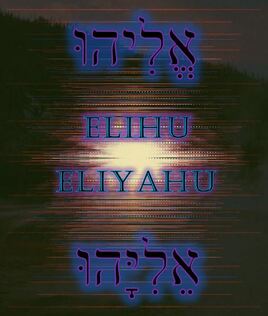
The person of Elihu is mentioned in the book of Job seven (7) different times. In five of those instances, his name is spelled the way it should be when considering the etymology of it, and in two of those instances, his name is spelled in a variant form, although the vocalization of the two are identical. Even so, that variant form is of note to us in this matter. The name of the prophet Elijah is written and pronounced also in two different ways in Hebrew Scripture: ELIYAH and the fuller ELIYAHU. When one takes the variant form of ELIHU and the full form of ELIYAHU and compares them, it immediately becomes clear that the two Hebrew names are actually spelled identically but pronounced differently. This is significant because vowels attached to Biblical Hebrew words are considered fluid, so that the reader is given the opportunity to read them as they are traditionally understood, or to disregard them and read the word using different vowels that result in possibly a different meaning to the word at hand. By doing this with ELIHU in the book of Job, we are able to read his name as being alternatively ELIYAHU, which creates a symbolic understanding of who is speaking. If this is done, and Elihu is viewed rather as Elijah, then parallels arise that cannot be easily ignored:
- Elihu alone among the other friends of Job spoke against their witness with righteous authority / Elijah seemed to be the only one standing up to the false prophets in his midst.
- Elihu was apparently with the friends of Job the entire time during their discourses but remained silent and unmentioned / Elijah never died in his ministry yet remains hidden from us to this day.
- Elihu is the last to speak before the appearance of the Holy One in the text / Elijah is to return right before the Day of the Lord.
- Elihu’s message was of repentance / Elijah’s message upon return will be of repentance.
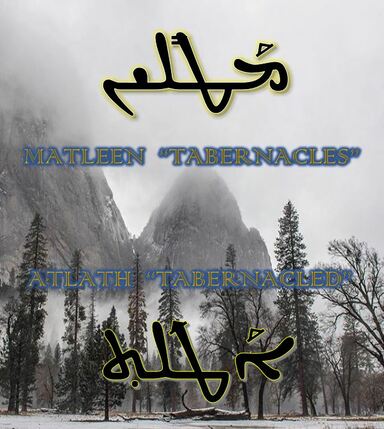
All of this points to Elihu’s mention of the cloud and the SUKKAH of the Holy One as being linked to Elijah and his appearance on the mountain alongside of Moses with Yeshua.
The factor of King David is obviously directly related to his descendant – Yeshua, who alone of the three has the right to be king, as well.
Going back to the actual account of the transfiguration of Yeshua as recorded in Matthew 17, we read in verse 4 that Peter, watching the miraculous meeting in astonishment, recommends that they should build three “tabernacles” – one for Yeshua, one for Moses, and one for Elijah. The word he uses in the Aramaic of the ancient Peshitta text, translated above, is the word MATLEEN, which is the parallel term for SUKKOT that we find used in the Aramaic version of the Torah! This means that Peter wanted to literally build a SUKKAH for each of them!
His intent, however well-placed it was, did not come to fruition. Instead, verse 5 tells us something else happened: a glorious cloud came and “tabernacled” over them all. The importance of this should not be missed. The Aramaic term here is ATLATH and is the verbal form of the plural noun MATLEEN “tabernacles” encountered in the words of Peter in the previous verse! Essentially, the Aramaic tells us blatantly that while Peter wanted to build tabernacles to shade them, the Holy One Himself provided a glorious cloud that served to tabernacle over them all! This event directly corresponds to the statement made in the Torah that the Holy One caused the people of Israel to dwell in SUKKOT during their time in the wilderness – here we see Yeshua, Moses, and Elijah effectively dwelling in a cloudy SUKKAH in this wilderness setting!
The connection cannot be any clearer!
But what are we to make of all this?
The factor of King David is obviously directly related to his descendant – Yeshua, who alone of the three has the right to be king, as well.
Going back to the actual account of the transfiguration of Yeshua as recorded in Matthew 17, we read in verse 4 that Peter, watching the miraculous meeting in astonishment, recommends that they should build three “tabernacles” – one for Yeshua, one for Moses, and one for Elijah. The word he uses in the Aramaic of the ancient Peshitta text, translated above, is the word MATLEEN, which is the parallel term for SUKKOT that we find used in the Aramaic version of the Torah! This means that Peter wanted to literally build a SUKKAH for each of them!
His intent, however well-placed it was, did not come to fruition. Instead, verse 5 tells us something else happened: a glorious cloud came and “tabernacled” over them all. The importance of this should not be missed. The Aramaic term here is ATLATH and is the verbal form of the plural noun MATLEEN “tabernacles” encountered in the words of Peter in the previous verse! Essentially, the Aramaic tells us blatantly that while Peter wanted to build tabernacles to shade them, the Holy One Himself provided a glorious cloud that served to tabernacle over them all! This event directly corresponds to the statement made in the Torah that the Holy One caused the people of Israel to dwell in SUKKOT during their time in the wilderness – here we see Yeshua, Moses, and Elijah effectively dwelling in a cloudy SUKKAH in this wilderness setting!
The connection cannot be any clearer!
But what are we to make of all this?
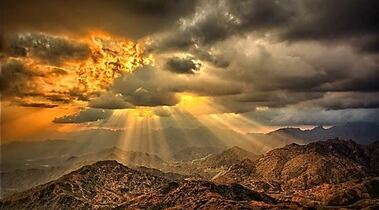
The initial declaration given to Moses to tell the people in Leviticus 23:43 is that the Holy One Himself made the people to dwell in tabernacles in the wilderness. Upon initial inspection of the Word, however, nothing in that statement holds up to such scrutiny. Nowhere are the people seen to have done so. Therefore, the reader is presented with a seeming incongruity in the Text. But if the reader instead takes initiative and begins to search out the details of the matter, something else begins to develop – a new detail to the divine portrait of Scripture takes shape, and we see that the meaning of the Text is indeed upheld; it can be trusted! Furthermore, the validity of the Holy One’s statement opens a door to a key event in the life of Messiah that allows for it to be appreciated in a much greater manner than is possible if not considered in the light of a proper Torah understanding.
Furthermore, the statement made in Matthew 17:5 that we read was spoken out of the cloud was the command of “You must listen to Him!” In the Aramaic of the Peshitta, this is a single imperative utterance: SHMAW! The Messiah must be heeded! If you know anything of Hebrew, you should recognize the Aramaic cognate as the parallel to the Hebrew SHEMA! “Hear / Listen!” This is the greatest command of the Torah, and Moses spoke it to Israel in Deuteronomy 6:4. Similarly, Elijah “heard” it on Sinai, as well, as recorded in 1st Kings 19:13, just as his symbolic counterpart Elihu commanded to be “heard” in Job 32:10 and several more times in his subsequent words. Its usage by the heavenly voice coming out of the glorious cloud at the transfiguration should be understood that the time for the redemption of all things is upon us in the person of the Messiah Yeshua. It is Yeshua who shall bring about the restoration of the Kingdom on this earth, and so is due all our allegiance and our ears should ever be turned to the words spoken by the King of Israel!
Furthermore, the statement made in Matthew 17:5 that we read was spoken out of the cloud was the command of “You must listen to Him!” In the Aramaic of the Peshitta, this is a single imperative utterance: SHMAW! The Messiah must be heeded! If you know anything of Hebrew, you should recognize the Aramaic cognate as the parallel to the Hebrew SHEMA! “Hear / Listen!” This is the greatest command of the Torah, and Moses spoke it to Israel in Deuteronomy 6:4. Similarly, Elijah “heard” it on Sinai, as well, as recorded in 1st Kings 19:13, just as his symbolic counterpart Elihu commanded to be “heard” in Job 32:10 and several more times in his subsequent words. Its usage by the heavenly voice coming out of the glorious cloud at the transfiguration should be understood that the time for the redemption of all things is upon us in the person of the Messiah Yeshua. It is Yeshua who shall bring about the restoration of the Kingdom on this earth, and so is due all our allegiance and our ears should ever be turned to the words spoken by the King of Israel!
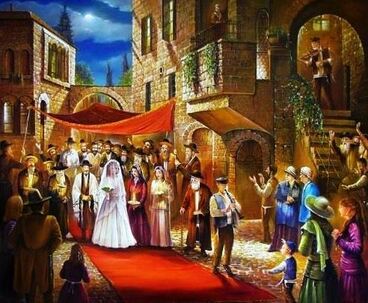
The cloud in the wilderness served as a national SUKKAH for the people on their way to the Promised Land. It's presence over them all hinted at the core desire of the Most High - for us to know that we are home when we are with Him - wherever we may be His Presence provides for us.
Restoration is the ultimate goal of the Holy One for this world, and it will come about with the re-institution of the Kingdom in that land as Yeshua sits on the throne in Jerusalem. There we shall enjoy the Presence of the Creator and His care for us all in miraculous ways – once again a great and divinely-ordained cloud shall rest over us for a SUKKAH, as the Text tells us, signifying also the marriage of His Presence with His people! The prophet Isaiah saw this truth and was told to write down what awaited Israel and the world in time to come in Isaiah 4:5-6.
Restoration is the ultimate goal of the Holy One for this world, and it will come about with the re-institution of the Kingdom in that land as Yeshua sits on the throne in Jerusalem. There we shall enjoy the Presence of the Creator and His care for us all in miraculous ways – once again a great and divinely-ordained cloud shall rest over us for a SUKKAH, as the Text tells us, signifying also the marriage of His Presence with His people! The prophet Isaiah saw this truth and was told to write down what awaited Israel and the world in time to come in Isaiah 4:5-6.
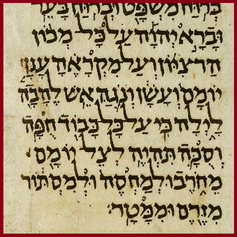
5 And YHWH shall create above every dwelling [on] Mount Tziyon, and above her assemblies a cloud by day, and smoke, and glowing flame of fire at night, for above all the glory shall be a wedding canopy,
6 and a tabernacle shall be for a shade by day from the heat, and for a refuge, and for a hiding place from downpour and from rain.
The day will come when the Presence of the Holy One will once again be in our midst, dwelling with us in security. The heavenly SUKKAH will show itself in all its cloudy glory, and we will know that the wilderness journey is over, at long last, and for good!
Let no doubt remain.
Let no questions keep you from pursuing His Kingdom and His righteousness with all that is in you. May every insight and inquiry alike build you up as you live a life of total faith in Him and all that He has planned for His people. SHEMA with heart, soul, and strength, and walk in the shade provided so graciously by the Holy One.
Let no doubt remain.
Let no questions keep you from pursuing His Kingdom and His righteousness with all that is in you. May every insight and inquiry alike build you up as you live a life of total faith in Him and all that He has planned for His people. SHEMA with heart, soul, and strength, and walk in the shade provided so graciously by the Holy One.
All study contents Copyright Jeremy Chance Springfield, except for graphics and images, which are Copyright their respective creators.
